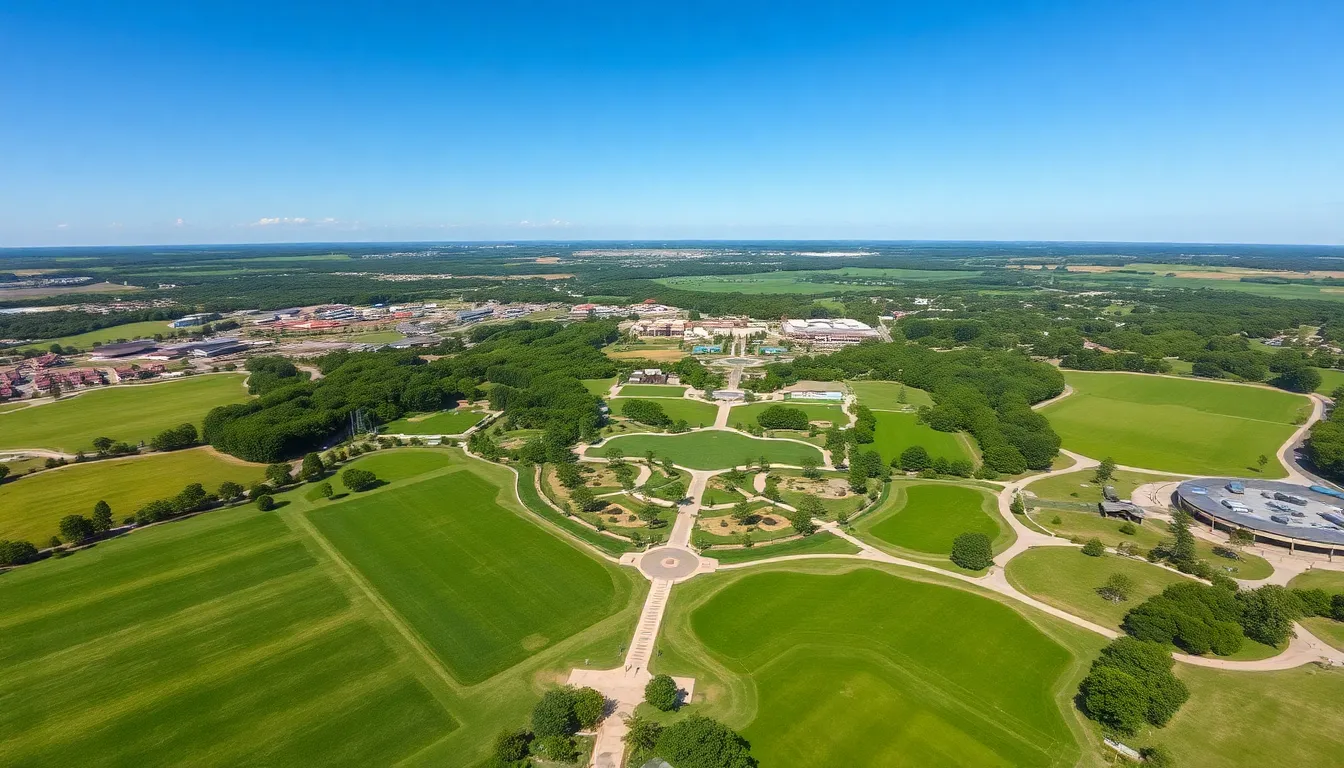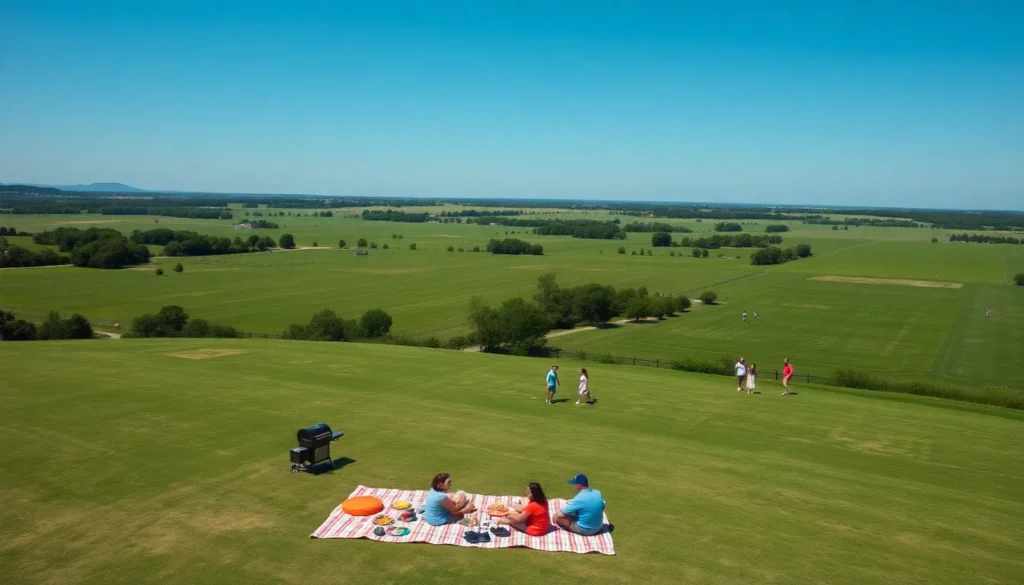Table of Contents
ToggleImagine trying to picture 400 acres. It’s not just a number; it’s a sprawling expanse that could make even the most ambitious picnic planner break a sweat. To put it in perspective, 400 acres is roughly equivalent to 300 football fields. That’s a lot of turf for tossing a pigskin or hosting a family reunion where Aunt Edna brings her infamous potato salad.
Understanding Acreage
Acreage measures land size, commonly used in the US for real estate and agricultural purposes. One acre equals 43,560 square feet. To visualize 400 acres, consider its equivalent in square feet, which totals about 17,424,000 square feet.
Many people find it helpful to compare 400 acres to familiar landmarks. For instance, this area is roughly the size of 300 football fields. Additionally, it could comfortably accommodate over 1,200 residential lots, depending on zoning regulations.
Land also offers diverse uses. Several communities organize local events, such as festivals and fairs, in open spaces of this size. Large parks could take up this amount of land, providing recreational activities and nature trails.
When planning agricultural projects, 400 acres supports various farming operations. It can yield significant crops or house numerous livestock. In a suburban context, developers can design sprawling neighborhoods or commercial complexes within such an expanse.
Understanding how to navigate large acreage can assist in land management. Simple mapping tools help visualize layout and features. Professionals often create blueprints to outline potential uses, guiding decisions for development or conservation.
While numbers provide a sense of scale, personal experiences can make understanding acreage more tangible. For example, families might reminisce about bonfires or camping in spacious backyards, drawing a connection to the vastness of 400 acres. This size invites exploration and creativity in land use for individuals and communities alike.
Visualizing 400 Acres

Understanding the size of 400 acres helps to create a tangible sense of space. By comparing it to familiar landmarks, the enormity becomes clearer.
Comparison to Common Landmarks
Four hundred acres equals roughly 300 football fields. This comparison illustrates how expansive the area truly is. Additionally, consider that a major league baseball field measures about 2.5 acres, meaning 400 acres holds approximately 160 baseball fields. Parks also serve as common reference points; Central Park, for example, covers about 843 acres, so 400 acres represents nearly half of that iconic space. In urban settings, 400 acres can contain bustling shopping malls, or an entire university campus. All these examples help visualize just how vast 400 acres can feel.
Real-Life Examples of 400 Acres
Several notable locations showcase 400 acres effectively. For instance, the Memphis Zoo spans about 400 acres, which allows ample space for diverse animal habitats. Another example is the National Mall in Washington, D.C., encompassing approximately 315 acres, demonstrating how significant landmarks fit within similar acreage. In rural contexts, farms often utilize around 400 acres for crop cultivation or livestock grazing. This size can yield substantial agricultural products, highlighting practical uses. Parks can also be designed across this area to host community events, sports activities, and recreational spaces. Each of these real-life examples reinforces the vastness and utility of 400 acres.
Implications of Land Size
Understanding the implications of 400 acres involves various applications in agriculture and urban planning. This size offers numerous opportunities and considerations.
Agricultural Uses
400 acres can significantly contribute to agriculture. It allows farmers to cultivate a range of crops, from grains to fruits and vegetables. Depending on climate and soil conditions, yields could exceed several tons per acre annually. Livestock farming can expand, accommodating hundreds of animals like cows or sheep. Sustainable practices can thrive on such land, enabling crop rotation and preserving soil health. The investment in agricultural technology can further enhance productivity on these acres. For instance, irrigation systems and precision farming can optimize output. Overall, this size supports both large-scale production and community-supported agriculture.
Urban Planning Considerations
In urban contexts, 400 acres facilitates diverse development plans. Planners can design residential neighborhoods, commercial centers, or public parks. For example, a mixed-use development might incorporate housing, retail spaces, and recreational areas. Green spaces like parks and gardens can enhance community well-being and environmental quality. Zoning regulations play a crucial role in determining what can be built, influencing density and land use. Additionally, transportation infrastructure is vital for connecting developments and facilitating accessibility. With thoughtful planning, this land size can address community needs and improve urban living.
Understanding the size of 400 acres opens up a world of possibilities. Whether it’s for agricultural endeavors or community development this vast expanse can accommodate various uses. Its comparison to familiar landmarks helps visualize just how large this area is.
With thoughtful planning and management 400 acres can serve as a valuable resource for communities. From hosting events to supporting sustainable farming practices the potential is immense. By exploring innovative land uses individuals and organizations can truly make the most of such a significant space.







